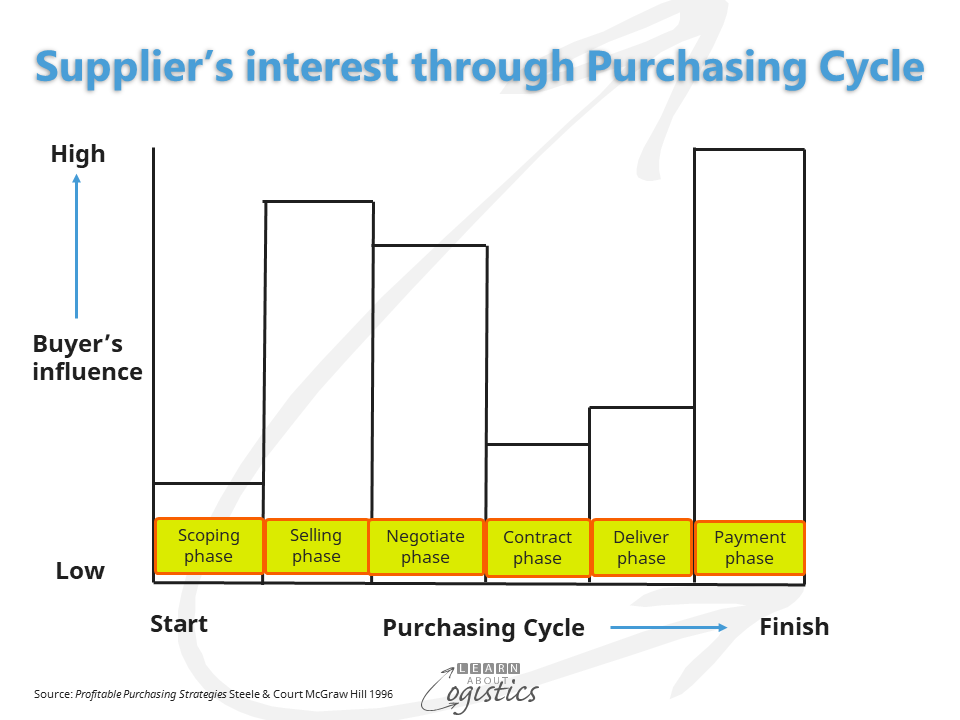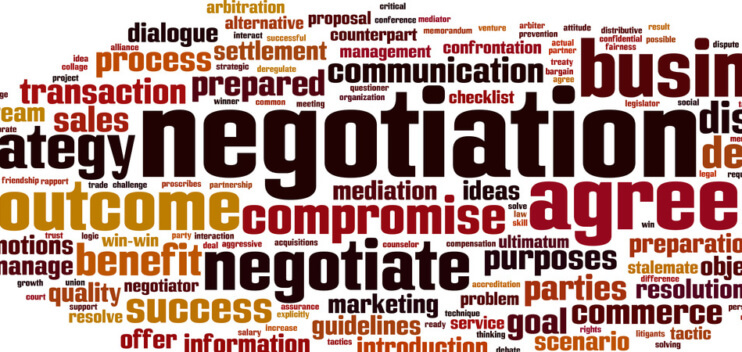Business Relationships and Buyer focus
The previous blogpost discussed the potential for sellers to condition buyers, so they will accept the seller’s preferred objectives. But buyers can also condition sellers to accept the buyer’s objectives.
However, prior to developing your Purchasing strategy, there is a need to identify the type of business relationship that exists or that you require between buyer and seller. The table below provides a selection of relationships (and there could be more). Intentionally, the term ‘partnership’ is not listed. This is because a partnership is ‘the sharing of risk and reward’ – although at large customers the approach of buyers is too often ‘you take the risks and I take the rewards’. A true partnership between ‘partners’ is so rare in business that the terms have become meaningless, although used often by consultants and journalists.

Importantly, each relationship type in the table is of equal value – an organisation can have different business relationships with its range of tier 1 suppliers (also with buyers of its products and services). This is because each business relationship is dependent on the economic circumstances at a point in time and the 3Ps of a business relationship – Power, Profit and Process.
Power, Profit and Process determines the business relationship
Power is the ‘ability of one party to influence the behaviour of the other party in a manner that is contrary to their desired interests’. It is determined by the commercial and operational attributes and resources that each party can demonstrate, placed against the needs and wants of the other party. The three levels of Power in a supply chain relationship are where an organisation:
- Owns a supplier or customer (or has a controlling shareholding)
- Controls the range of decisions a supplier or customer can make or
- Influence can be exerted over a supplier or customer to obtain a more advantageous contract
A buyer is able to exert Power over suppliers through:
- Emphasize on size: An organisation’s buying volume in a supply market. Focus is on deductions and penalties against suppliers
- Exploit dependency: by the supplier on the buying organisation or its Supply Chain
- Use leverage: promote the buying organisation’s brand, reputation, recognition and prestige
- Categorise suppliers into two classes; those in a monopoly/duopoly or cartel type relationship and those in a competitive supply situation. The latter may be treated in a casual manner in relation to ordering and paying
A Supplier can use their factors of Power to counter those of the Buyer. Examples are:
Limits to availability:
- Availability of supply for an item that is difficult to obtain; controlled or constrained by the supplier
- Licence to operate provided to the supplier by a government or patent holder or global licence holder
- Spread of customers – target a low percentage of total sales with any one customer. Reduce dependency on large and powerful buyers
Technical capability:
- Specialised knowledge – restricts the number of potential suppliers
- Focused product – incorporate value added services into the product, which cannot be easily duplicated
- R&D – regularly provide new products and services that address customer needs
- Technology leadership – intellectual property (IP) through holding patents, copyright etc.
- Reputation and prestige – acknowledged as the ‘best’ supplier for a product or service
In addition to being awarded the contract, the seller could have additional ‘satisfiers’ that are needed by the business. It is for the buyer to identify these ‘satisfiers’ and therefore provide limits to the supplier’s Power positioning. Examples of ‘satisfiers’ are:
- To meet period/annual sales targets
- Discourage competition through gaining market share
- Maintain a viable sales/technical team at the supplier
- Maintain factory capacity
- Sell excess inventory
Profit in business relationships carries a broader meaning than used by accountants. It is the total of benefits gained by each party to the agreement. For a supplier, the Profit could total the:
- buyer’s total annual expenditure with the supplier
- percentage of the buyer’s annual orders to the supplier’s annual sales revenue
- regularity and predictability of the buyer’s orders
- payment terms and buyer’s timing of payments
- value of association with a known (prestigious) buyer
- ease of replacing the buyer’s business
Process is the means by which the contract is executed – how easy or difficult is it to maintain the business relationship at an operational level and on a regular basis.
Conditioning the Seller
To gain advantage in a purchasing situation, an objective of the buyer must be to ‘keep the seller selling’ – this is more likely to result in the buyer obtaining concessions. The diagram below illustrates when the buyer has most influence over the seller through the purchasing cycle.

The Scoping phase occurs when Procurement evaluates prospective suppliers for an item and a supplier is considering the value of potential business against the required effort to win the contract. This is a phase with low influence from the buyer.
The Selling phase is when Procurement needs to increase the level of supplier interest and therefore the level of buyer’s influence. Statements that indicate a wish to change and therefore should raise interest at prospective suppliers are: “we are undertaking…; we are seeking…; we are aware…; we need to improve…; we want to explore…; we are interested in…; we need…”.
The diagram shows the Selling phase to be when the buyer’s influence is highest, so this phase should be extended for a longer time. To often, buyers stop the supplier selling by indicating they have ‘got the deal’ or there is no competition, because the supplier has the best product or the lowest price, or the best terms.
To condition the supplier and ‘keep the seller selling’, the buyer can use a selection of techniques, including:
- Not reveal all information early in the buying process: e.g. total quantity requirements; competitor suppliers; price targets or budgets; the decision making process
- Not reveal any deadlines: these provide negotiating leverage for a supplier
- Vary the buying methods: a supplier will know if a business always goes to tender with competitive bids or undertakes post-tender negotiations. The buyer should select the most appropriate method for each buy, against each buyer relationship
- Not possible to identify signing authority for the buy: state that authority can depend on the contract price or if certain conditions are required in the contract
Supplier Conditioning is an important and necessary element of a Purchasing strategy – it is a proactive approach that counters the possible conditioning approaches by suppliers to their customers.

